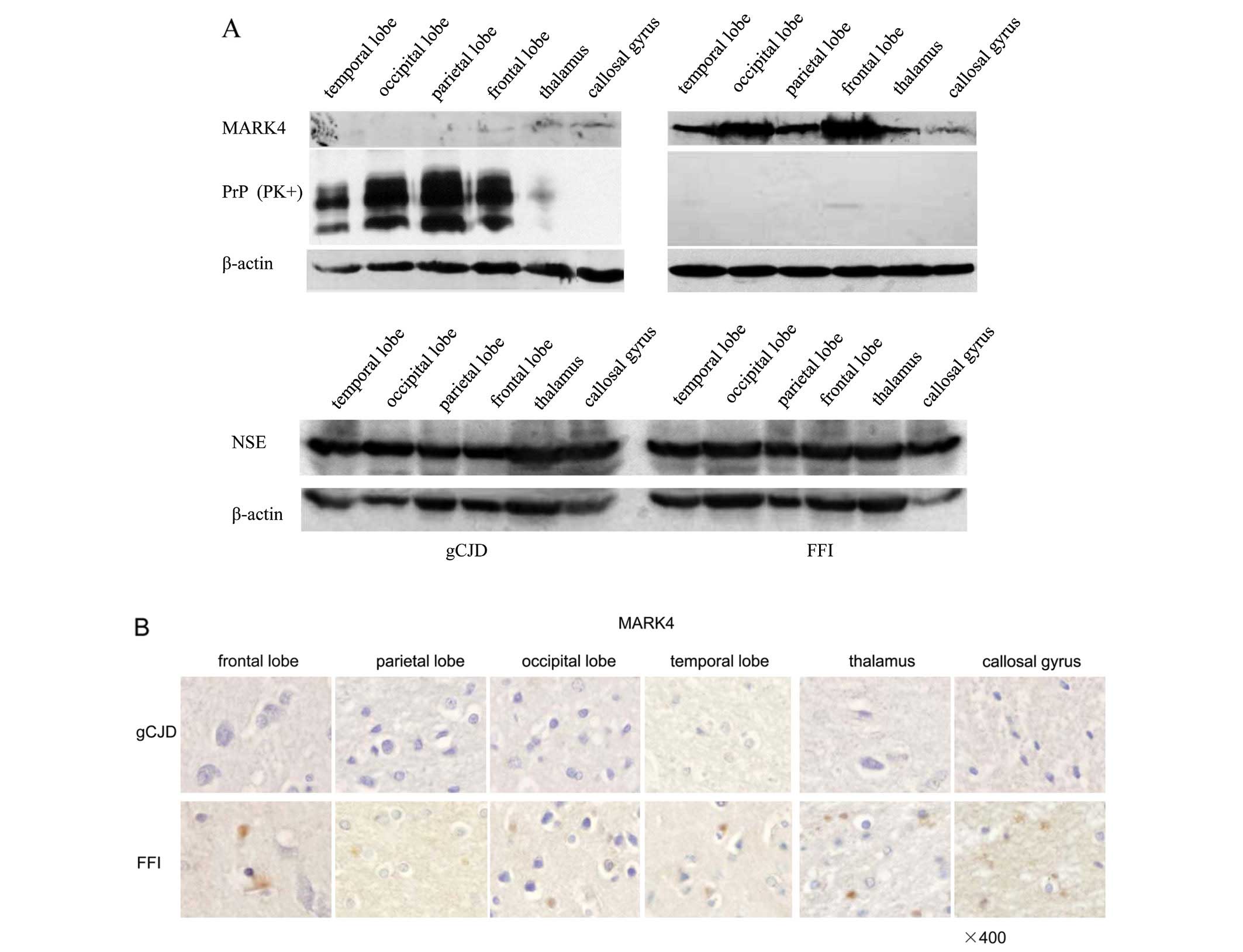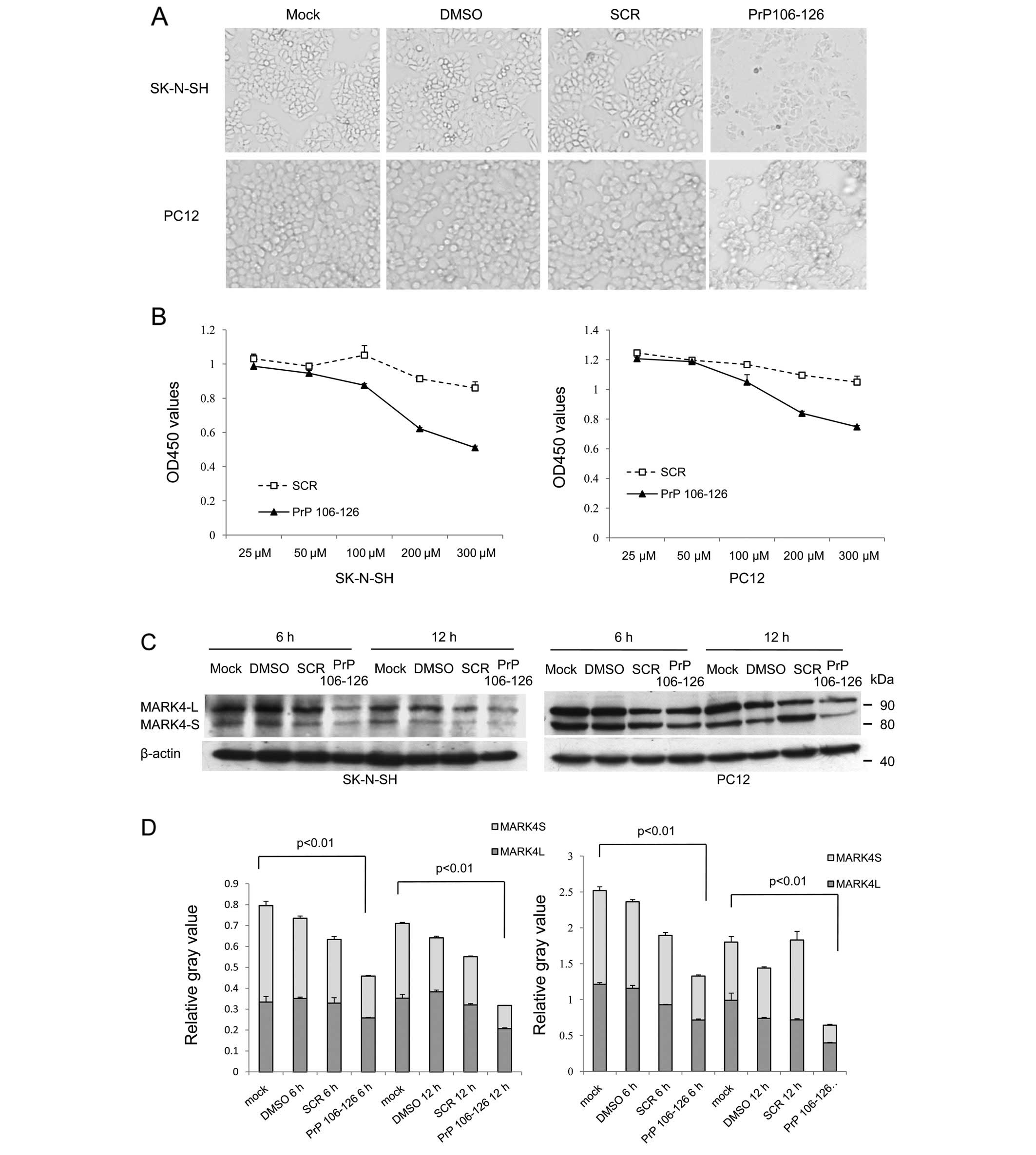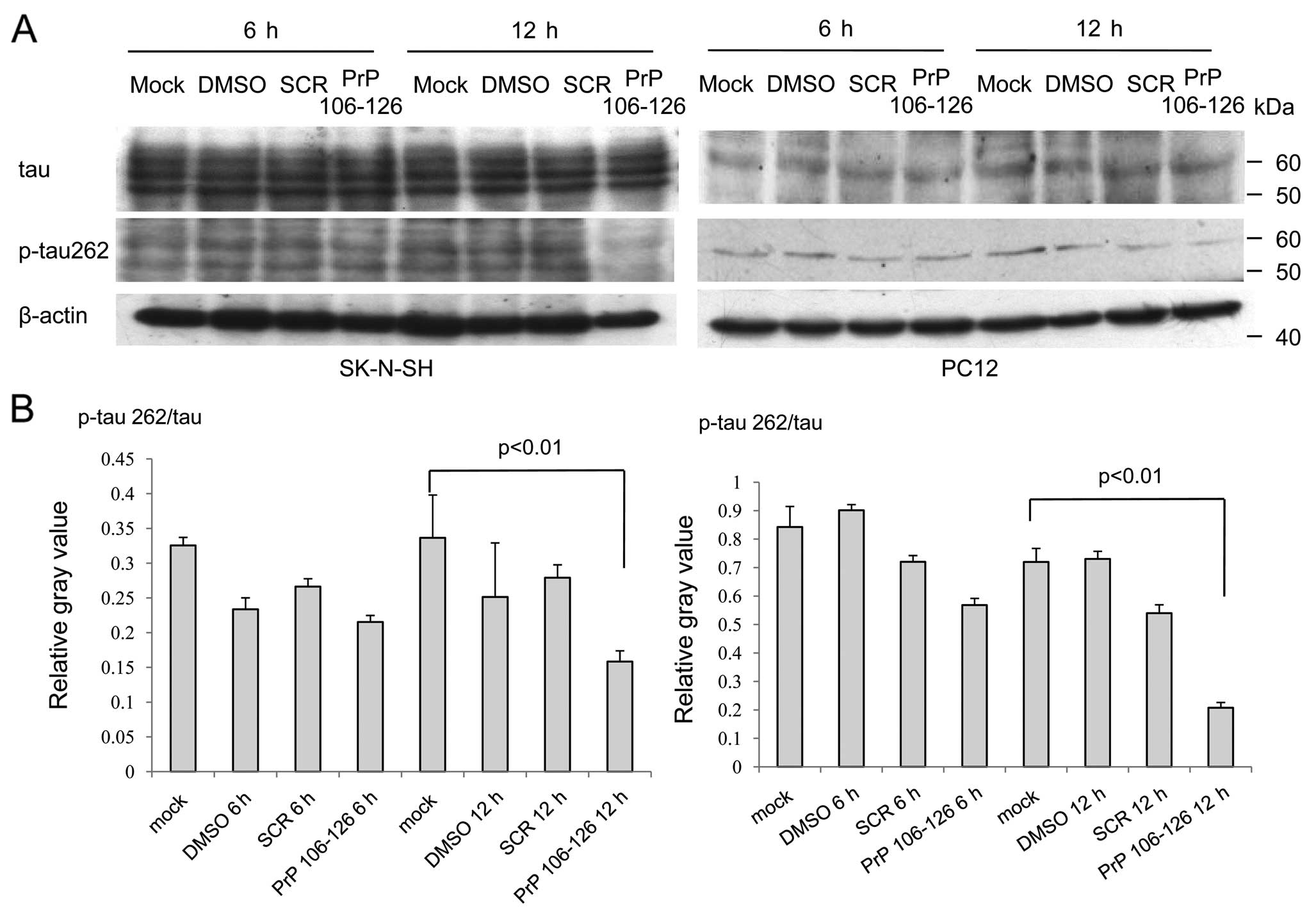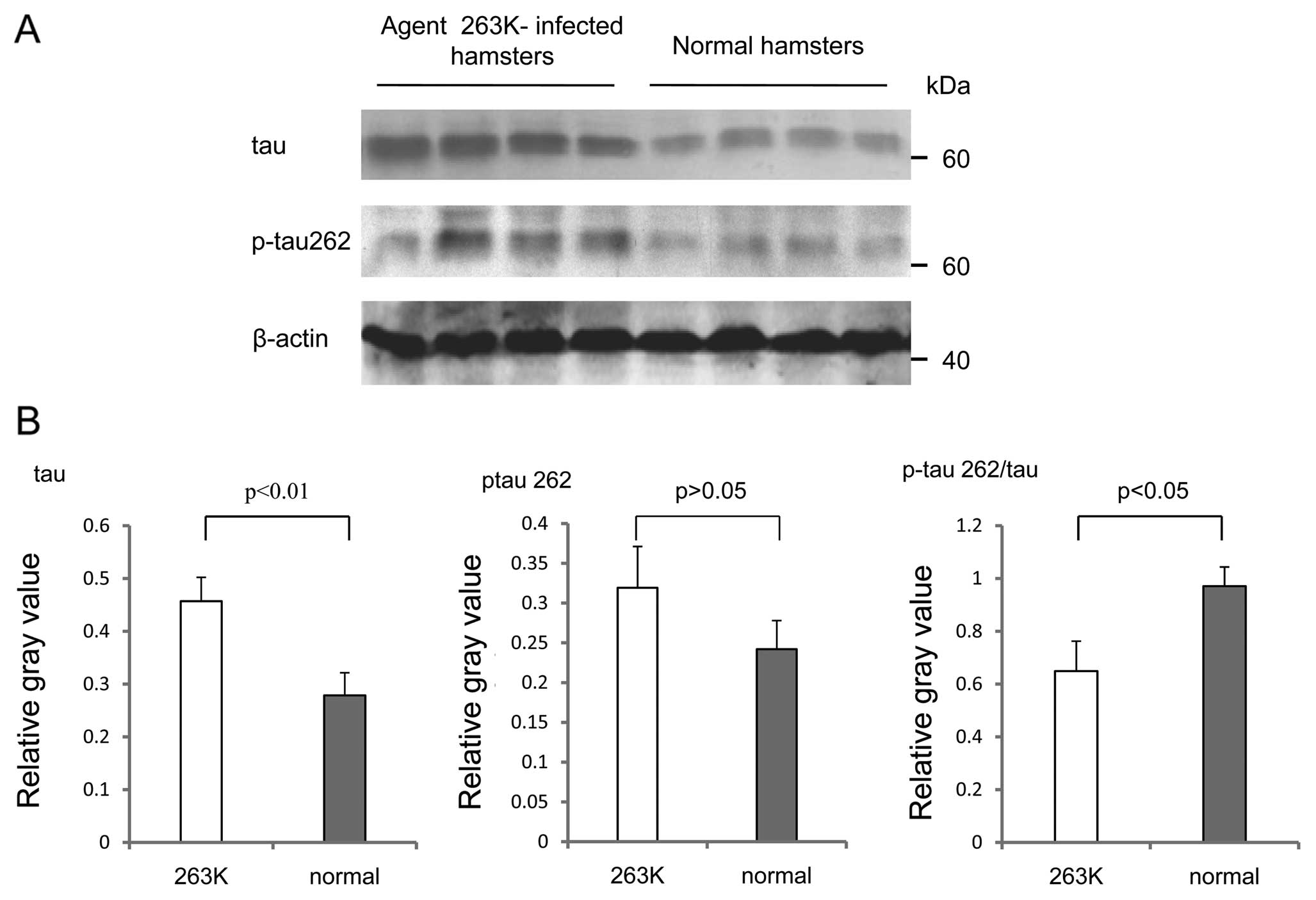|
1.
|
SB PrusinerPrionsProc Natl Acad Sci
USA951336313383199810.1073/pnas.95.23.133639811807
|
|
2.
|
B CaugheyB ChesebroPrion protein and the
transmissible spongiform encephalopathiesTrends Cell
Biol75662199710.1016/S0962-8924(96)10054-417708907
|
|
3.
|
J CastillaP SaaC HetzC SotoIn vitro
generation of infectious scrapie
prionsCell121195206200510.1016/j.cell.2005.02.01115851027
|
|
4.
|
G LegnameIV BaskakovHO NguyenSynthetic
mammalian prionsScience305673676200410.1126/science.1100195
|
|
5.
|
MP McKinleyDC BoltonSB PrusinerA
protease-resistant protein is a structural component of the scrapie
prionCell355762198310.1016/0092-8674(83)90207-66414721
|
|
6.
|
A DesaiTJ MitchisonMicrotubule
polymerization dynamicsAnnu Rev Cell Dev
Biol1383117199710.1146/annurev.cellbio.13.1.83
|
|
7.
|
GG GundersenEvolutionary conservation of
microtubule-capture mechanismsNat Rev Mol Cell
Biol3296304200210.1038/nrm77711994749
|
|
8.
|
GR WangS ShiC GaoChanges of tau profiles
in brains of the hamsters infected with scrapie strains 263 K or
139 A possibly associated with the alteration of phosphate
kinasesBMC Infect Dis1086201010.1186/1471-2334-10-8620356412
|
|
9.
|
CF DongS ShiXF WangThe N-terminus of PrP
is responsible for interacting with tubulin and fCJD related PrP
mutants possess stronger inhibitive effect on microtubule assembly
in vitroArch Biochem
Biophys4708392200810.1016/j.abb.2007.11.00718037369
|
|
10.
|
XL LiGR WangYY JingCytosolic PrP induces
apoptosis of cell by disrupting microtubule assemblyJ Mol
Neurosci43316325201110.1007/s12031-010-9443-920838930
|
|
11.
|
B TrinczekM BrajenovicA EbnethG
DrewesMARK4 is a novel microtubule-associated proteins/microtubule
affinity-regulating kinase that binds to the cellular microtubule
network and to centrosomesJ Biol
Chem27959155923200410.1074/jbc.M304528200
|
|
12.
|
T KatoS SatohH OkabeIsolation of a novel
human gene, MARKL1, homologous to MARK3 and its involvement in
hepatocellular
carcinogenesisNeoplasia349200110.1038/sj.neo.790013211326310
|
|
13.
|
A SchneiderR LaageO von
AhsenIdentification of regulated genes during permanent focal
cerebral ischaemia: characterization of the protein kinase
9b5/MARKL1/MARK4J
Neurochem8811141126200410.1046/j.1471-4159.2003.02228.x
|
|
14.
|
A BeghiniI MagnaniG RoversiThe neural
progenitor-restricted isoform of the MARK4 gene in 19q13.2 is
upregulated in human gliomas and overexpressed in a subset of
glioblastoma cell
linesOncogene2225812591200310.1038/sj.onc.120633612735302
|
|
15.
|
M HasegawaM Morishima-KawashimaK TakioM
SuzukiK TitaniY IharaProtein sequence and mass spectrometric
analyses of tau in the Alzheimer’s disease brainJ Biol
Chem26717047170541992
|
|
16.
|
EM MandelkowE ThiesB TrinczekJ BiernatE
MandelkowMARK/PAR1 kinase is a regulator of microtubule-dependent
transport in axonsJ Cell
Biol16799110200410.1083/jcb.20040108515466480
|
|
17.
|
J ZhangL ChenBY ZhangComparison study on
clinical and neuropathological characteristics of hamsters
inoculated with scrapie strain 263K in different challenging
pathwaysBiomed Environ Sci1765782004
|
|
18.
|
YS KimRI CarpSM CallahanHM
WisniewskiIncubation periods and survival times for mice injected
stereotaxically with three scrapie strains in different brain
regionsJ Gen Virol68695702198710.1099/0022-1317-68-3-6953546594
|
|
19.
|
J YeJ HanQ ShiHuman prion disease with a
G114V mutation and epidemiological studies in a Chinese family: a
case seriesJ Med Case
Rep2331200810.1186/1752-1947-2-33118925969
|
|
20.
|
Q ShiBY ZhangC GaoJ HanGR WangC ChenC
TianXP DongThe pathological and pathogenic characteristics in
various brain regions from a Chinese patient with G114V genetic
CJDNeuropathology325159201210.1111/j.1440-1789.2011.01237.x21732990
|
|
21.
|
XH ShiJ HanJ ZhangClinical,
histopathological and genetic studies in a family with fatal
familial insomniaInfect Genet
Evol10292297201010.1016/j.meegid.2010.01.00720096809
|
|
22.
|
JM ChenC GaoQ ShiDifferent expression
patterns of CK2 subunits in the brains of experimental animals and
patients with transmissible spongiform encephalopathiesArch
Virol15310131020200810.1007/s00705-008-0084-z
|
|
23.
|
G ForloniN AngerettiR ChiesaNeurotoxicity
of a prion protein
fragmentNature362543546199310.1038/362543a08464494
|
|
24.
|
T FlorioS ThellungC AmicoPrion protein
fragment 106–126 induces apoptotic cell death and impairment of
L-type voltage-sensitive calcium channel activity in the GH3 cell
lineJ Neurosci Res543413521998
|
|
25.
|
M EttaicheR PichotJP VincentJ ChabryIn
vivo cytotoxicity of the prion protein fragment 106–126J Biol
Chem27536487364902000
|
|
26.
|
G DrewesB TrinczekS
IllenbergerMicrotubule-associated protein/microtubule
affinity-regulating kinase (p110mark). A novel protein kinase that
regulates tau-microtubule interactions and dynamic instability by
phosphorylation at the Alzheimer-specific site serine 262J Biol
Chem270767976881995
|
|
27.
|
G ManningDB WhyteR MartinezT HunterS
SudarsanamThe protein kinase complement of the human
genomeScience29819121934200210.1126/science.107576212471243
|
|
28.
|
RF MoroniS De BiasiP ColapietroL LarizzaA
BeghiniDistinct expression pattern of microtubule-associated
protein/microtubule affinity-regulating kinase 4 in differentiated
neuronsNeuroscience1438394200610.1016/j.neuroscience.2006.07.052
|
|
29.
|
F TagliaviniF PrelliL VergaSynthetic
peptides homologous to prion protein residues 106–147 form
amyloid-like fibrils in vitroProc Natl Acad Sci
USA90967896821993
|
|
30.
|
YH LiuYL HanJ SongHeat shock protein 104
inhibited the fibrillization of prion peptide 106–126 and
disassembled prion peptide 106–126 fibrils in vitroInt J Biochem
Cell Biol43768774201121296677
|
|
31.
|
I MagnaniC NovielliM BelliniG RoversiL
BelloL LarizzaMultiple localization of endogenous MARK4L protein in
human gliomaCell Oncol31357370200919759416
|
|
32.
|
RD TerryThe pathogenesis of Alzheimer
disease: an alternative to the amyloid hypothesisJ Neuropathol Exp
Neurol5510231025199610.1097/00005072-199655100-000018857998
|
|
33.
|
EM MandelkowJ BiernatG DrewesN GustkeB
TrinczekE MandelkowTau domains, phosphorylation, and interactions
with microtubulesNeurobiol
Aging16355363199510.1016/0197-4580(95)00025-A7566345
|
|
34.
|
M ZunguJC SchislerMF EssopC McCuddenC
PattersonMS WillisRegulation of AMPK by the ubiquitin proteasome
systemAm J Pathol178411201110.1016/j.ajpath.2010.11.03021224036
|
|
35.
|
AK Al-HakimA ZagorskaL ChapmanM DeakM
PeggieDR AlessiControl of AMPK-related kinases by USP9X and
atypical Lys(29)/Lys(33)-linked polyubiquitin chainsBiochem
J411249260200810.1042/BJ2008006718254724
|
|
36.
|
J SatohS ObayashiT MisawaK SumiyoshiK
OosumiH TabunokiProtein microarray analysis identifies human
cellular prion protein interactorsNeuropathol Appl
Neurobiol351635200910.1111/j.1365-2990.2008.00947.x18482256
|
|
37.
|
K StamerR VogelE ThiesE MandelkowEM
MandelkowTau blocks traffic of organelles, neurofilaments, and APP
vesicles in neurons and enhances oxidative stressJ Cell
Biol15610511063200210.1083/jcb.20010805711901170
|
|
38.
|
A EbnethR GodemannK StamerS IllenbergerB
TrinczekE MandelkowOverexpression of tau protein inhibits
kinesin-dependent trafficking of vesicles, mitochondria, and
endoplasmic reticulum: implications for Alzheimer’s diseaseJ Cell
Biol14377779419989813097
|
















